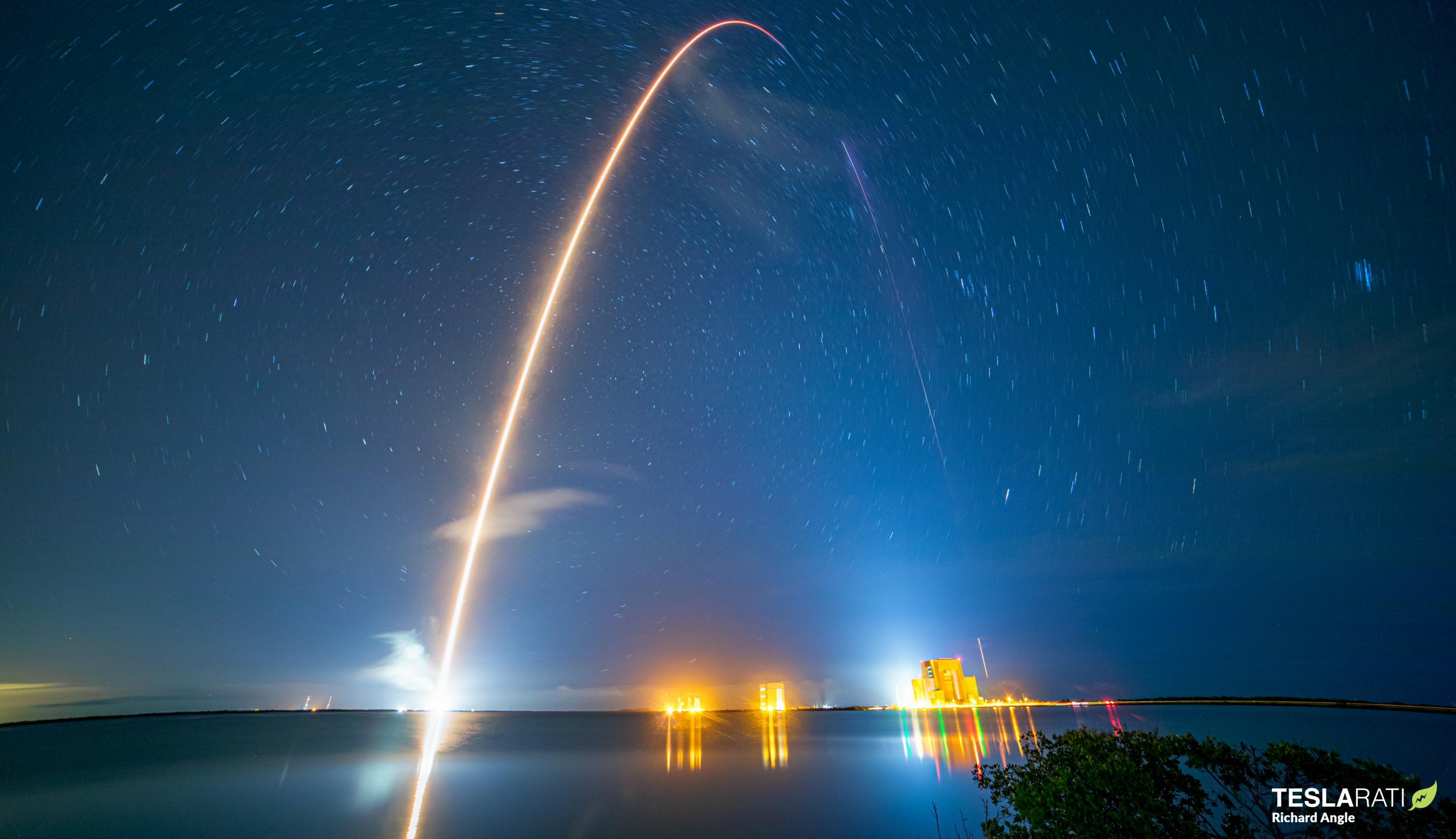
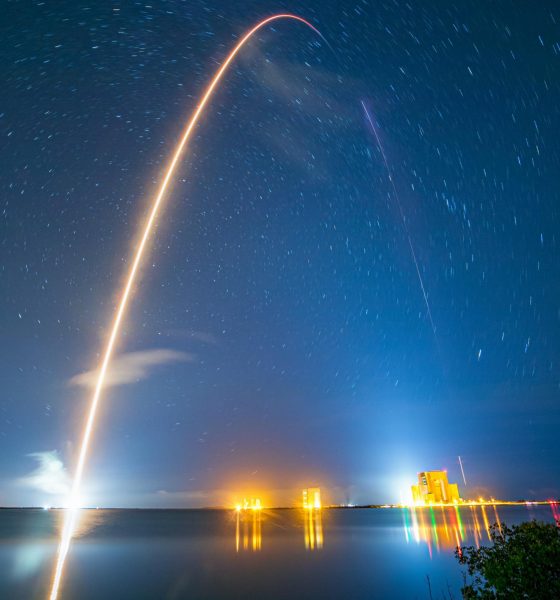
News
SpaceX Falcon 9 rocket nails first operational NASA astronaut launch [updated]
Update: SpaceX has successfully resolved a handful of minor thermal control issues facing the brand new Crew Dragon capsule currently ferrying four astronauts in low Earth orbit (LEO).
As previously noted, shortly after the spacecraft reached orbit, two redundant thermal control system pumps registered pressure spikes, pushing Crew Dragon to use the backup pump. SpaceX was able to resolve that issue, effectively restarting the pumps and confirming healthy operation. Several hours later, the backup pump (“Loop B”) suffered another minor issue but was again returned to healthy operations. Simultaneously, Crew-1 astronauts found themselves stuck at an (admittedly comfortable) cabin temperature of 23C (~73F).
More pressingly, three of four heaters used to warm the propellant fed to Crew Dragon’s small Draco maneuvering and attitude control thrusters were automatically disabled a few hours after liftoff. Essential for most operations in orbit and necessary for Dragon to be allowed to remain docked with the ISS, restoring the functionality of at least one of the three heaters was essential, and SpaceX was thankfully able to restore function to all three by relaxing excessively conservative limits in the spacecraft’s flight software. Thanks to SpaceX’s fast work, Dragon is now in perfect health and ready for two crucial Draco burns at 11:20 am and 12 pm EST (UTC-5) on Monday, November 16th and is still scheduled to arrive at the ISS around 11 pm EST.
Right on schedule, a SpaceX Falcon 9 rocket has successfully lifted off on the company’s operational NASA astronaut launch debut, sending four crew members on their way to the International Space Station (ISS) in a historic moment for commercial spaceflight.
Days prior, NASA and SpaceX completed a multi-day “flight readiness review (FRR),” the results of which made SpaceX the first private company in human history to be qualified by a national space agency for routine astronaut launches. As is now more or less routine, the SpaceX Falcon 9 rocket assigned to NASA’s Crew-1 mission performed flawlessly over the 12 minutes it was involved in the launch, including nominal booster and upper stage performance, a successful booster landing at sea, and a smooth Dragon deployment from Falcon 9’s expendable second stage.
In a small point of concern, Crew Dragon capsule C207 (colloquially named Dragon Resilience by its crew) appeared to suffer a minor hardware or software fault shortly after orbital insertion, offering the first public glimpse behind the scenes as ground teams coordinated with Dragon’s orbiting astronaut crew to diagnose and fix the issue.
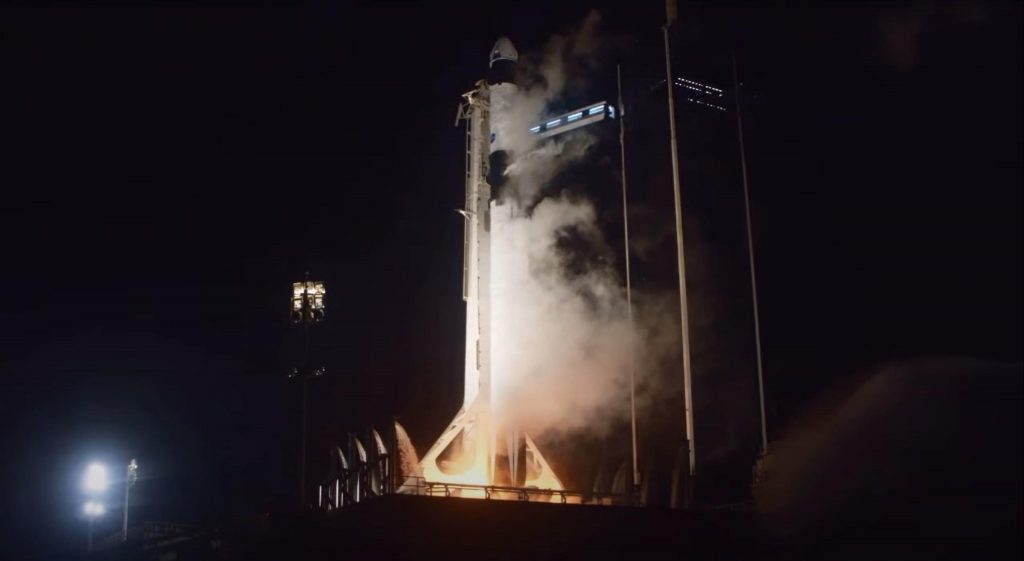
According to information revealed by SpaceX and NASA officials as they interacted with Crew-1 NASA astronauts Mike Hopkins, Victor Glover, Shannon Walker, and Japanese (JAXA) astronaut Soichi Noguchi, Crew Dragon’s fault detection software was tripped sometime after reaching orbit. Both thermal control system (TCS) “loop” pumps – likely referring to pumps used to circulate a liquid-based radiator system to maintain capsule temperature – experienced off-nominal pressure spikes, causing the spacecraft computer to switch to the second pump (“Loop B”).
As SpaceX’s main earth-to-ground communications team member (CapCom) noted, the TCS pump issue was far from critical given that both pumps appeared to be healthy – and one of those two redundant pumps functioning healthily – moments after Dragon alerted its passengers to the issue. Deemed to be not a showstopper, SpaceX continued the mission and permitted Crew Dragon to begin its first orbit-raising thruster burn – the first of a fairly complex series of ‘phasing’ burns needed to safely rendezvous with the International Space Station (ISS).
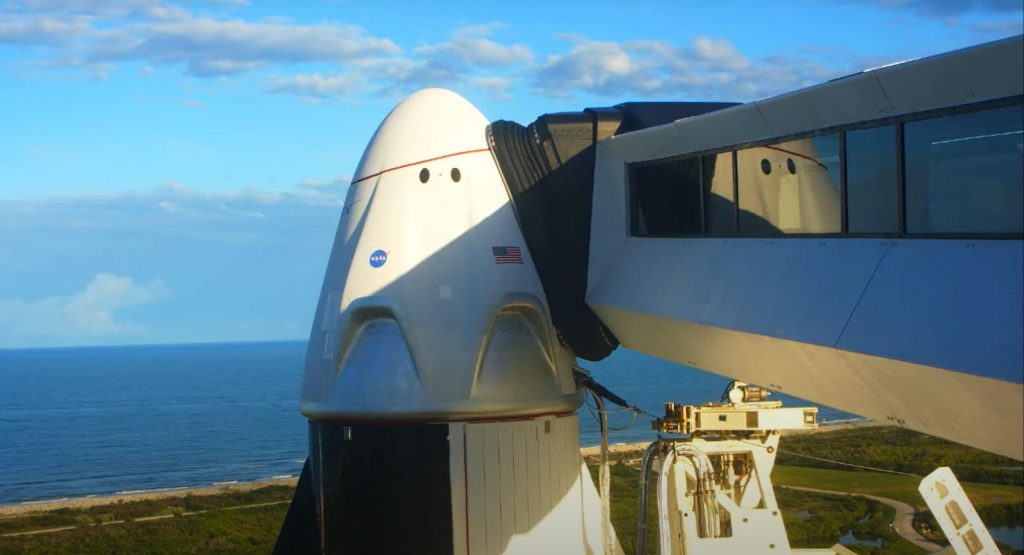
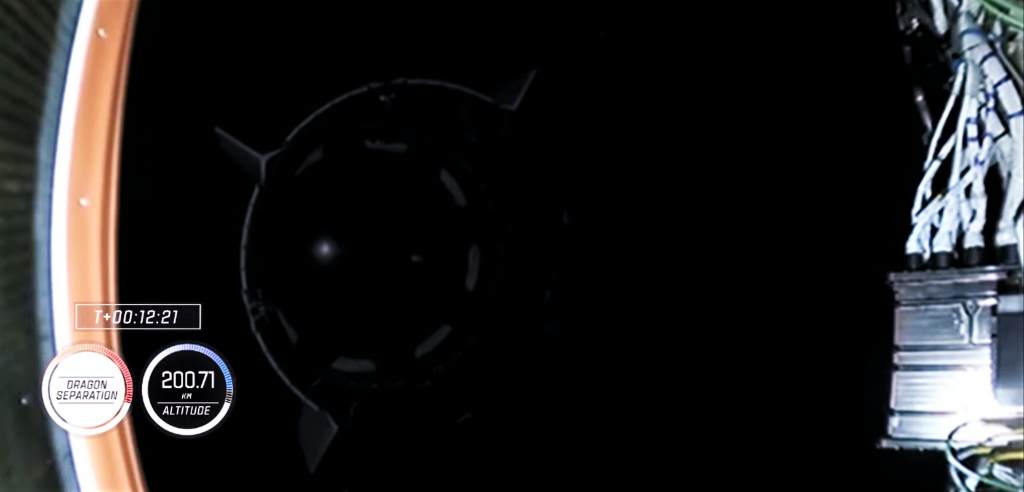
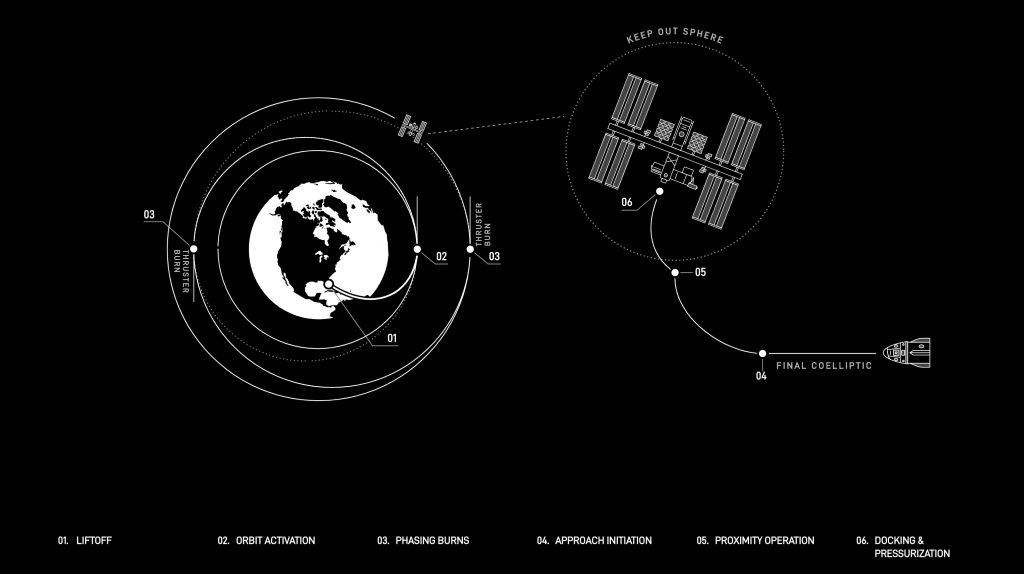
Unfortunately, due to a 24-hour weather delay from November 14th to November 15th, the complexities of orbital rendezvous mean that Crew Dragon’s Crew-1 mission to the ISS will involve a roughly day-long cruise phase. Had SpaceX been able to launch on the 14th, the cruise phase would have been just 8.5 hours long – perhaps the fastest crewed US space station rendezvous ever. Crew-1 will thus align quite closely with SpaceX’s Demo-2 astronaut launch debut, although likely not interspersed with manual astronaut piloting tests this time around.
On top of Crew Dragon’s thus far successful performance, Falcon 9 also completed a task critical for future Crew Dragon launches when new booster B1061 safely landed aboard SpaceX drone ship Of Course I Still Love You (OCISLY). While normally a distinctly secondary objective, booster recovery was all but essential for SpaceX and NASA during the Crew-1 launch after NASA’s recent reveal that B1061 has been assigned to launch Crew-2 as early as March 31st, 2021. In the likely event that the Falcon 9 booster is in good condition and NASA signs off after shadowing SpaceX’s refurbishment process, SpaceX will also become the first private company in history to launch astronauts into orbit on a flight-proven rocket booster. Additionally, thanks to plans to reuse Crew Dragon capsule C206 of Demo-2 fame, Crew-2 will also mark the first time in history that US astronauts launch into orbit in a reused space capsule.


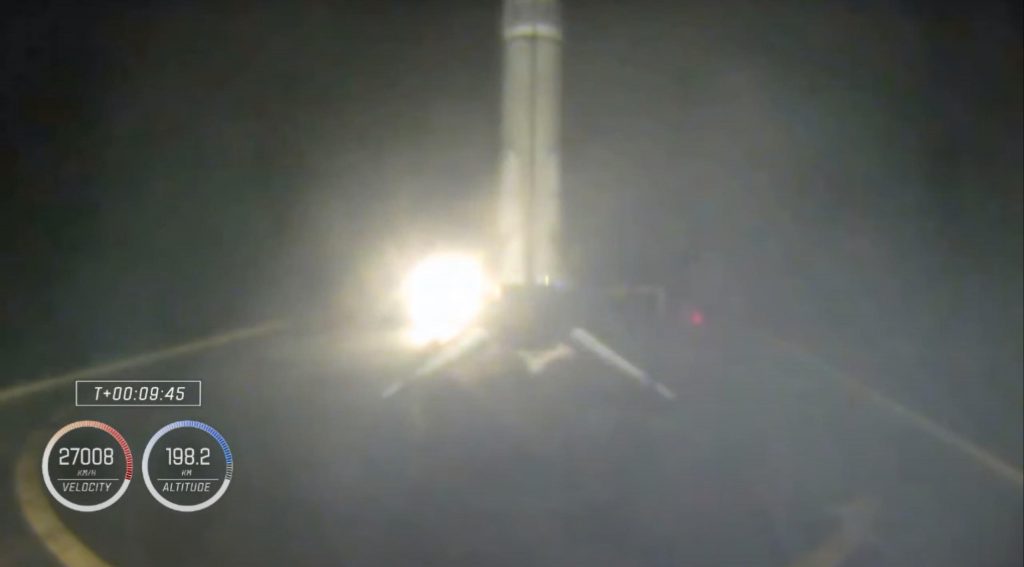
If the Crew-1 cruise phases goes according to plan, Crew Dragon will autonomously ferry Hopkins, Glover, Walker, and Noguchi from a ~200 km (~125 mi) parking orbit to the International Space Station (ISS) between now and Monday, November 16th, nominally docking with the space station around 11 pm EST (04:00 UTC 17 Nov). From liftoff to reentry, Crew-1 is expected to be the longest continuous spaceflight of a US spacecraft in American history, spending approximately six months in orbit. For JAXA astronaut Soichi Noguchi, his Crew-1 launch also made him the third astronaut in human history to fly to orbit on three separate vehicles.
Ultimately, for SpaceX, the company has never been closer to achieving its foundational goal of enabling the affordable expansion of humanity into space than it is after today’s successful Crew-1 launch.

News
Tesla is not sparing any expense in ensuring the Cybercab is safe
Images shared by the longtime watcher showed 16 Cybercab prototypes parked near Giga Texas’ dedicated crash test facility.

The Tesla Cybercab could very well be the safest taxi on the road when it is released and deployed for public use. This was, at least, hinted at by the intensive safety tests that Tesla seems to be putting the autonomous two-seater through at its Giga Texas crash test facility.
Intensive crash tests
As per recent images from longtime Giga Texas watcher and drone operator Joe Tegtmeyer, Tesla seems to be very busy crash testing Cybercab units. Images shared by the longtime watcher showed 16 Cybercab prototypes parked near Giga Texas’ dedicated crash test facility just before the holidays.
Tegtmeyer’s aerial photos showed the prototypes clustered outside the factory’s testing building. Some uncovered Cybercabs showed notable damage and one even had its airbags engaged. With Cybercab production expected to start in about 130 days, it appears that Tesla is very busy ensuring that its autonomous two-seater ends up becoming the safest taxi on public roads.
Prioritizing safety
With no human driver controls, the Cybercab demands exceptional active and passive safety systems to protect occupants in any scenario. Considering Tesla’s reputation, it is then understandable that the company seems to be sparing no expense in ensuring that the Cybercab is as safe as possible.
Tesla’s focus on safety was recently highlighted when the Cybertruck achieved a Top Safety Pick+ rating from the Insurance Institute for Highway Safety (IIHS). This was a notable victory for the Cybertruck as critics have long claimed that the vehicle will be one of, if not the, most unsafe truck on the road due to its appearance. The vehicle’s Top Safety Pick+ rating, if any, simply proved that Tesla never neglects to make its cars as safe as possible, and that definitely includes the Cybercab.
Elon Musk
Tesla’s Elon Musk gives timeframe for FSD’s release in UAE
Provided that Musk’s timeframe proves accurate, FSD would be able to start saturating the Middle East, starting with the UAE, next year.

Tesla CEO Elon Musk stated on Monday that Full Self-Driving (Supervised) could launch in the United Arab Emirates (UAE) as soon as January 2026.
Provided that Musk’s timeframe proves accurate, FSD would be able to start saturating the Middle East, starting with the UAE, next year.
Musk’s estimate
In a post on X, UAE-based political analyst Ahmed Sharif Al Amiri asked Musk when FSD would arrive in the country, quoting an earlier post where the CEO encouraged users to try out FSD for themselves. Musk responded directly to the analyst’s inquiry.
“Hopefully, next month,” Musk wrote. The exchange attracted a lot of attention, with numerous X users sharing their excitement at the idea of FSD being brought to a new country. FSD (Supervised), after all, would likely allow hands-off highway driving, urban navigation, and parking under driver oversight in traffic-heavy cities such as Dubai and Abu Dhabi.
Musk’s comments about FSD’s arrival in the UAE were posted following his visit to the Middle Eastern country. Over the weekend, images were shared online of Musk meeting with UAE Defense Minister, Deputy Prime Minister, and Dubai Crown Prince HH Sheikh Hamdan bin Mohammed. Musk also posted a supportive message about the country, posting “UAE rocks!” on X.
FSD recognition
FSD has been getting quite a lot of support from foreign media outlets. FSD (Supervised) earned high marks from Germany’s largest car magazine, Auto Bild, during a test in Berlin’s challenging urban environment. The demonstration highlighted the system’s ability to handle dense traffic, construction sites, pedestrian crossings, and narrow streets with smooth, confident decision-making.
Journalist Robin Hornig was particularly struck by FSD’s superior perception and tireless attention, stating: “Tesla FSD Supervised sees more than I do. It doesn’t get distracted and never gets tired. I like to think I’m a good driver, but I can’t match this system’s all-around vision. It’s at its best when both work together: my experience and the Tesla’s constant attention.” Only one intervention was needed when the system misread a route, showcasing its maturity while relying on vision-only sensors and over-the-air learning.
News
Tesla quietly flexes FSD’s reliability amid Waymo blackout in San Francisco
“Tesla Robotaxis were unaffected by the SF power outage,” Musk wrote in his post.

Tesla highlighted its Full Self-Driving (Supervised) system’s robustness this week by sharing dashcam footage of a vehicle in FSD navigating pitch-black San Francisco streets during the city’s widespread power outage.
While Waymo’s robotaxis stalled and caused traffic jams, Tesla’s vision-only approach kept operating seamlessly without remote intervention. Elon Musk amplified the clip, highlighting the contrast between the two systems.
Tesla FSD handles total darkness
The @Tesla_AI account posted a video from a Model Y operating on FSD during San Francisco’s blackout. As could be seen in the video, streetlights, traffic signals, and surrounding illumination were completely out, but the vehicle drove confidently and cautiously, just like a proficient human driver.
Musk reposted the clip, adding context to reports of Waymo vehicles struggling in the same conditions. “Tesla Robotaxis were unaffected by the SF power outage,” Musk wrote in his post.
Musk and the Tesla AI team’s posts highlight the idea that FSD operates a lot like any experienced human driver. Since the system does not rely on a variety of sensors and a complicated symphony of factors, vehicles could technically navigate challenging circumstances as they emerge. This definitely seemed to be the case in San Francisco.
Waymo’s blackout struggles
Waymo faced scrutiny after multiple self-driving Jaguar I-PACE taxis stopped functioning during the blackout, blocking lanes, causing traffic jams, and requiring manual retrieval. Videos shared during the power outage showed fleets of Waymo vehicles just stopping in the middle of the road, seemingly confused about what to do when the lights go out.
In a comment, Waymo stated that its vehicles treat nonfunctional signals as four-way stops, but “the sheer scale of the outage led to instances where vehicles remained stationary longer than usual to confirm the state of the affected intersections. This contributed to traffic friction during the height of the congestion.”
A company spokesperson also shared some thoughts about the incidents. “Yesterday’s power outage was a widespread event that caused gridlock across San Francisco, with non-functioning traffic signals and transit disruptions. While the failure of the utility infrastructure was significant, we are committed to ensuring our technology adjusts to traffic flow during such events,” the Waymo spokesperson stated, adding that it is “focused on rapidly integrating the lessons learned from this event, and are committed to earning and maintaining the trust of the communities we serve every day.”








